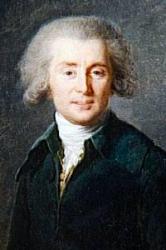Planning worship?
Check out our sister site, ZeteoSearch.org,
for 20+ additional resources related to your search.
- |
User Links
Search Results
O Shepherd of the Nameless Fold
Author: Mary A. Lathbury, 1841-1913 Meter: 8.6.8.6 D Appears in 6 hymnals Lyrics: 1. O Shepherd of the nameless fold,
The blessèd Church to be,
Our hearts with love and longing turn
To find their rest in Thee;
Thy kingdom come, its heav’nly walls
Unseen around us rise,
And deep in loving human hearts
Its broad foundations rise.
2. O holy kingdom, happy fold,
The blessèd Church to be,
Our hearts in love and worship turn
To find themselves in thee!
Thy bounds are known to God alone,
For they are set above;
The length, the breadth, the height are one,
And measured by His love. Used With Tune: LANDÅS
O Shepherd of the Nameless Fold
O Shepherd of the namelss fold
Author: Mary A. Lathbury; Mary Ann Lathbury Hymnal: The New Era of Song #d110 (1895)
O Shepherd of the namelss fold
The nameless fold
Author: Mary A. Lathbury; Mary Ann Lathbury Hymnal: The Assembly Hymnal #d63 (1881) First Line: O Shepherd of the namelss fold
The nameless fold
The nameless fold
Author: Mary A. Lathbury; Mary Ann Lathbury Hymnal: The Methodist Hymnal #d364 (1966) First Line: O Shepherd of the namelss fold
The nameless fold
Mary A. Lathbury

1841 - 1913 Person Name: Mary A. Lathbury, 1841-1913 Author of "O Shepherd of the Nameless Fold" in The Cyber Hymnal Lathbury, Mary Ann, was born in Manchester, Ontario County, New York, Aug. 10, 1841. Miss Lathbury writes somewhat extensively for the American religious periodical press, and is well and favourably known (see the Century Magazine, Jan., 1885, p. 342). Of her hymns which have come into common use we have:—
1. Break Thou the bread of life. Communion with God. A "Study Song" for the Chautauqua Literary and Scientific Circle, written in the summer of 1880. It is in Horder's (Eng.) Congregational Hymns, 1884.
2. Day is dying in the west. Evening. "Written at the request of the Rev. John H. Vincent, D.D., in the summer of 1880. It was a "Vesper Song," and has been frequently used in the responsive services of the Chautauqua Literary and Scientific Circle." It is in the Laudes Domini, N. Y., 1884.
For these details we are indebted to S. W. Duffield's English Hymns, &c, N. Y., 1886.
--John Julian, Dictionary of Hymnology (1907)
==================
Lathbury, Mary A., p. 640, i. Another hymn by this writer is, "Lift up, lift up thy voice with singing." [Praise to Christ), in Sankey's Sacred Songs & Solos, 1878.
--John Julian, Dictionary of Hymnology, Appendix, Part II (1907)
Mary A. Lathbury
William J. Kirkpatrick

1838 - 1921 Person Name: William J. Kirkpatrick, 1838-1921 Arranger of "LANDÅS" in The Cyber Hymnal William J. Kirkpatrick (b. Duncannon, PA, 1838; d. Philadelphia, PA, 1921) received his musical training from his father and several other private teachers. A carpenter by trade, he engaged in the furniture business from 1862 to 1878. He left that profession to dedicate his life to music, serving as music director at Grace Methodist Church in Philadelphia. Kirkpatrick compiled some one hundred gospel song collections; his first, Devotional Melodies (1859), was published when he was only twenty-one years old. Many of these collections were first published by the John Hood Company and later by Kirkpatrick's own Praise Publishing Company, both in Philadelphia.
Bert Polman
William J. Kirkpatrick
André Grétry

1741 - 1813 Person Name: André E. M. Grétry, 1741-1813 Composer of "LANDÅS" in The Cyber Hymnal Andre Ernest Modeste Gretry Belgium/France 1741-1813. Born at Liege, Belgium, his father was a poor musician. He was a choirboy at the Church of St. Denis in Liege. He studied under Jean-pantaleon Leclerc and later organist Nicolas Rennekin for keyboard and composition. He then studied under music master, Henri Moreau, at the collegiate church of St. Paul. He attended Italian opera performances by various masters and became interested in furthering his studies in Italy. He was financed to attend the College of Liege in Rome for five years, studying under Giovanni Battista Casali. He married painter, Jeanne-Marie Grandon. He began writing operas, devoting himself to French comic opera. In 1767 he left Rome and went to Geneva, Switzerland, where he met Voltaire, and produced another operetta, then went to Paris. He was not well known, and befriended the Swedish ambassador, Gustaf Creutz, from which he attained a libretto, “Le Huron”, and set it to music in just a short time. Its performance was successful. He soon composed two more comic operas, establishing his eminence in that area. He became a French citizen. He composed some 50 operas, his best in 1771 and 1784. He was the first to include the tuba curva instrument in his operas, which gave them a distinct personality. He also used mandolins in his works. During the French Revolution he lost much of his property, but successive governments in France vied in his favor and he received rewards for his works. He was appointed Inspector of the Conservatoire, and Napoleon granted him the cross of the “Legion of Honor” and a pension. He also taught opera composition to students, including his two dauthers, Lucile and Caroline. He died at the Hermitage in Montmorency and was buried in Paris. A statue commemorating him was commissioned in 1804 by Hippolyte, comte de Livry, and placed in the Opera Comique in 1809, now in the Metropolitan Museum of Art, New York.
John Perry
André Grétry


 My Starred Hymns
My Starred Hymns


